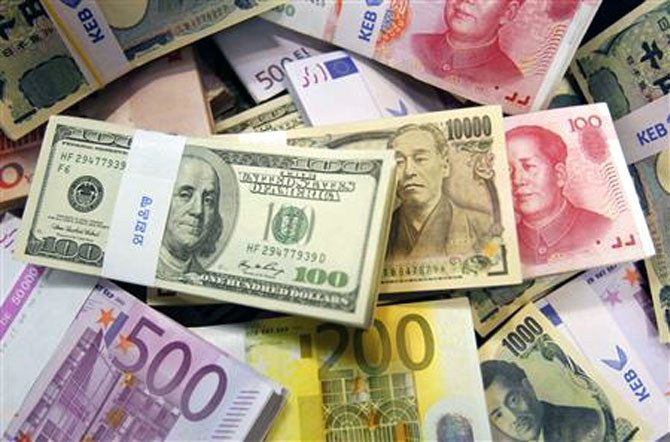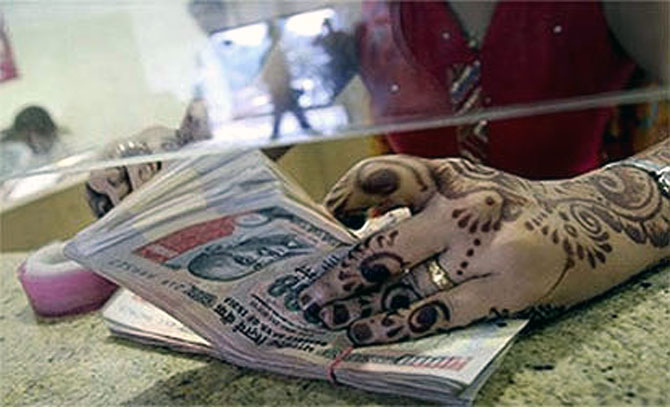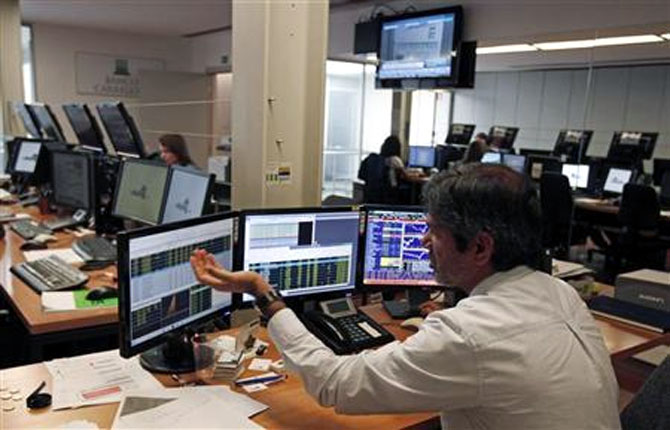Photographs: Kamal Kishore/Reuters Puneet Wadhwa in Mumbai
Foreign inflows into the equity market appear to be chasing the prospect of a supposed game-changing BJP election victory, with the party's strong performance in recent state elections boosting these hopes
In the Asian region, political risk has become an overarching theme for investors in Thailand, India and Indonesia where critical general elections will take place in 2014. Foreign institutional investors (FIIs) have pumped in $1,246 million, or $1.3 billion, in the Indian markets in CY14.
Investor preferences have also shifted to cyclical stocks like capital goods, infrastructure and real estate, banking and consumer durables.
However, among prominent countries that vote to elect a new government in the emerging market pack, India still lags behind on year-till-date (YTD) basis despite garnering a fair share of FII flows.
Despite the euphoria and the recent rally, the S&P BSE Sensex has gained 3.6 per cent (YTD). Jakarta Composite (Indonesia) index has been the top performer, rising 9.6 per cent YTD, data shows. However, analysts remain cautious on the road ahead for Indonesian markets.
Warns Richard Iley, chief Asia economist at BNP Paribas in a recent note: “Indonesia also faces electoral uncertainty in 2014 and a still souring growth-inflation trade-off. Foreign ownership of the bond market remains worryingly high, raising the risk of continued outflows. Slowing economic growth and IDR depreciation also challenge the fiscal arithmetic in Indonesia, with evidence of substantial deficit overshoot set to emerge in the midst of the election cycle.”
Click on NEXT for more...
What's keeping the FIIs interested in India?
Image: Foreign inflows into the equity market appear to be chasing the prospect of a supposed game-changing BJP election victory.Photographs: Truth Leem/Reuters
So, what’s keeping the FIIs interested in India?
Foreign inflows into the equity market appear to be chasing the prospect of a supposed game-changing BJP election victory, with the party’s strong performance in recent state elections boosting these hopes, analysts say.
Most participants believe that the Narendra Modi-led National Democratic Alliance (NDA) victory is almost certain and to that extent, a positive sentiment is building up.
Points out Rajesh Cheruvu, chief investment officer, RBS Private Banking: “Globally, among the countries like Indonesia, Malaysia, Thailand, South Africa and Brazil that will vote to elect a new government in 2014, relative certainty of the outcome is higher among the Indian markets.”
Click on NEXT for more...
What's keeping the FIIs interested in India?
Photographs: Reuters
“Stability in the rupee has also aided sentiment. The latest current account deficit (CAD) data has seen foreign investors buy Indian equities more from an INR perspective and have added beta names like capital goods, consumer durable stocks to their portfolio,” said Tirthankar Patnaik, director – institutional research, Religare Capital Markets.
Fundamental support for the rupee continues to come from an improvement in the current account deficit since Q3 2013, a trend analysts expect to continue.
“We think recent positive momentum in the rupee on the back of a narrowing current account deficit, softer inflation prints, enhanced policy credibility and strong capital inflows will continue in the near-term. However, the upcoming general election remains a risk,” point out Rahul Bajoria and Siddhartha Sanyal of Barclays in their recent report.
Click on NEXT for more...
What's keeping the FIIs interested in India?
Photographs: Jose Manuel Riberio/Reuters
Word of caution
Despite the overall positive sentiment, analysts do caution that the markets can correct in case the election outcome throws up a hung Parliament or a Third Front-led government.
“We upgraded India to overweight in our Asian asset allocation recently. However, some administrative steps to boost investments are likely to be adopted by any stable government; and several macro-economic parameters like the twin deficits, inflation and liquidity seem to be in the early stages of recovery.
Only the equity market’s worst case scenario of a non-Congress non-BJP ‘Third Front’ government can, we think, upset the Indian equities applecart,” points out Manishi Raychaudhuri, managing director and Asia Pacific Strategist at BNP Paribas Securities.
“With valuations close to justifiable levels, we believe Indian equities will perform in line with earnings growth. Over FY14-15, we expect a Sensex EPS CAGR of 15.9 per cent. This implies a Sensex target of 24,800 by March 2015 or 24,000 by end-2014,” he adds.
Click on NEXT for more...
What's keeping the FIIs interested in India?
Image: Incremental buying by FIIs would slowdown as they will wait and watch how policy decisions would shape up.Photographs: Cheryl Ravelo/Reuters
If a decisive mandate is missing, Dilip Bhat, joint managing director, Prabhudas Lilladher Group expects that Nifty to dip to 5,500 levels.
“But one should remember that in the last three years when India saw all the possible dramas enacted by the politicians, FII’s continued to have faith in the Indian markets and we did manage to attract healthy flows,” he says.
Says Motilal Oswal, chairman and managing director, Motilal Oswal Financial Services: “The chances of a Third Front government are very low. However, in case, such a government does come to power, we would see a 10 per cent correction in the markets from the current levels and the FIIs will press the sell button on India.
On the other hand, even if Narendra Modi does come to power, incremental buying by FIIs would slowdown, as they will wait and watch how policy decisions would shape up. So either way, post elections, the markets will see some correction for some time.”







article